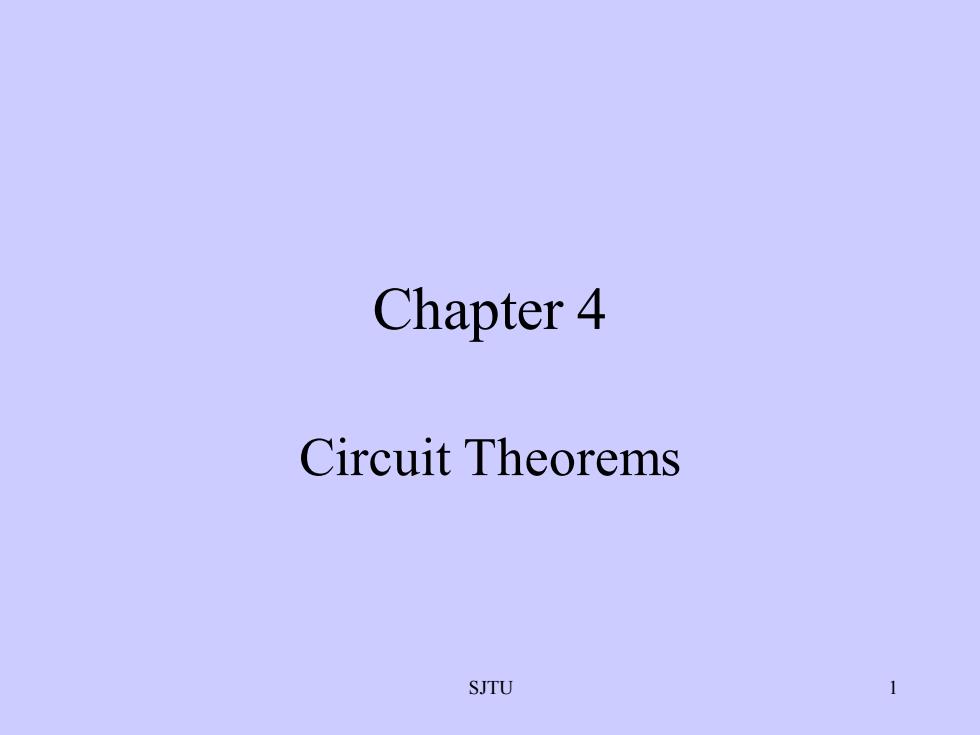
Chapter 4Circuit TheoremsSJTU
SJTU 1 Chapter 4 Circuit Theorems
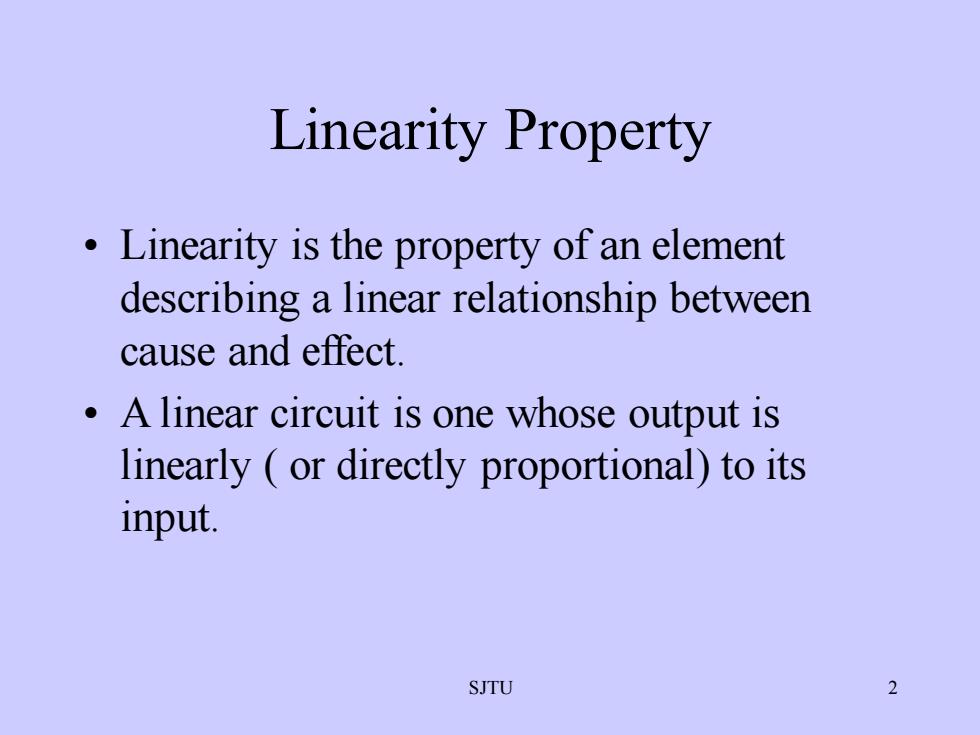
Linearity Property: Linearity is the property of an elementdescribing a linear relationship betweencause and effect: A linear circuit is one whose output islinearly ( or directly proportional) to itsinput.2SJTU
SJTU 2 Linearity Property • Linearity is the property of an element describing a linear relationship between cause and effect. • A linear circuit is one whose output is linearly ( or directly proportional) to its input
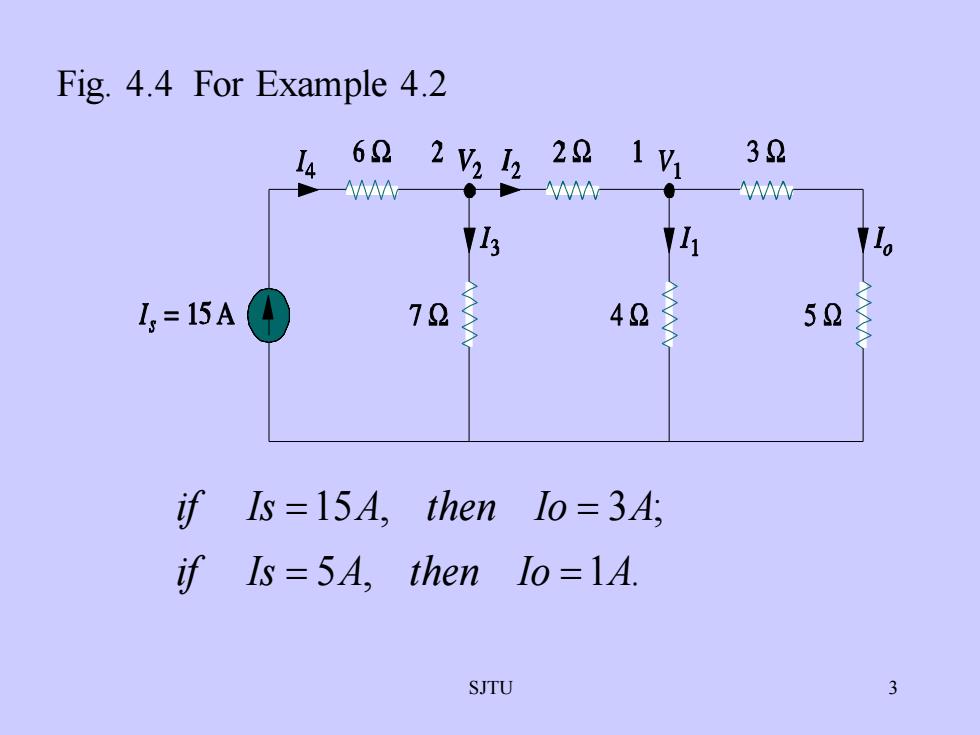
Fig. 4.4 For Example 4.23262222 V2/21VI14A1111.172421,=15A52ifIs =15A, then Io = 3A;if Is =5A, then lo=1A.3SJTU
SJTU 3 Fig. 4.4 For Example 4.2 5 , 1 . 15 , 3 ; if Is A then Io A if Is A then Io A = = = =
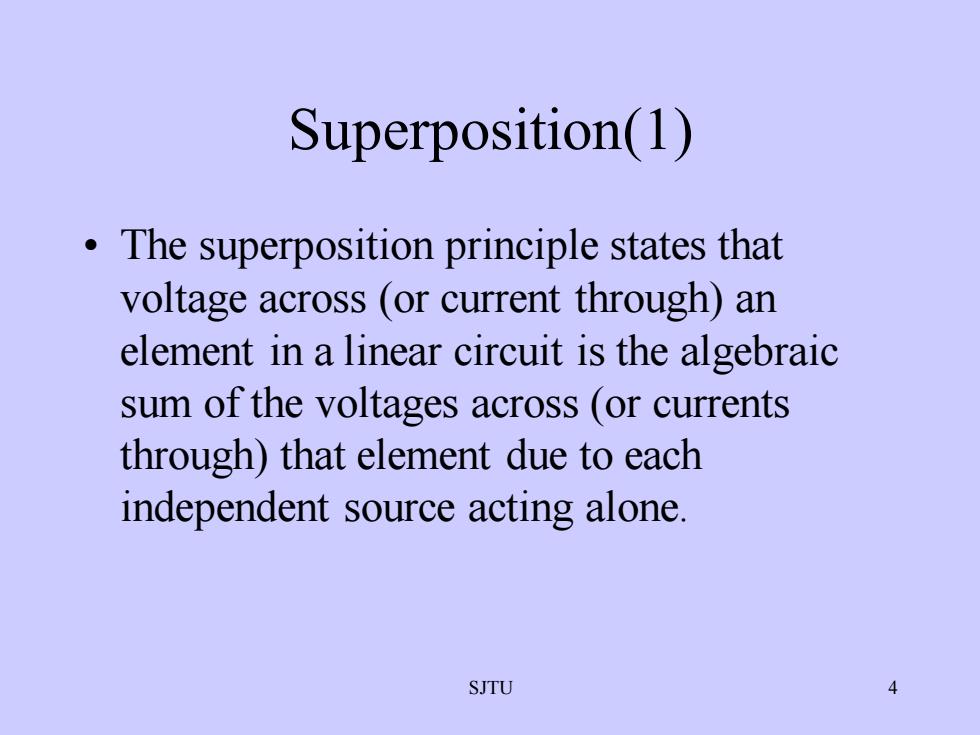
Superposition(1): The superposition principle states thatvoltage across (or current through) anelement in a linear circuit is the algebraicsum of the voltages across (or currentsthrough) that element due to eachindependent source acting aloneSJTU
SJTU 4 Superposition(1) • The superposition principle states that voltage across (or current through) an element in a linear circuit is the algebraic sum of the voltages across (or currents through) that element due to each independent source acting alone
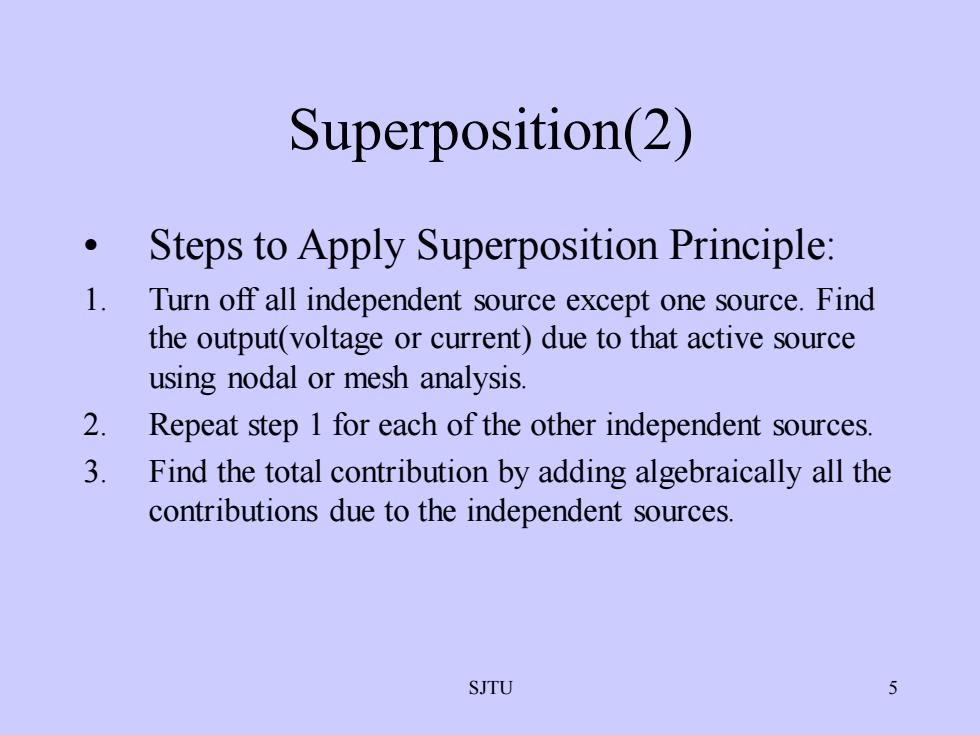
Superposition(2)Steps to Apply Superposition Principle:1.Turn off all independent source except one source. Findthe output(voltage or current) due to that active sourceusing nodal or mesh analysis.2.Repeat step 1 for each of the other independent sources3.Find the total contribution by adding algebraically all thecontributions due to the independent sources5SJTU
SJTU 5 • Steps to Apply Superposition Principle: 1. Turn off all independent source except one source. Find the output(voltage or current) due to that active source using nodal or mesh analysis. 2. Repeat step 1 for each of the other independent sources. 3. Find the total contribution by adding algebraically all the contributions due to the independent sources. Superposition(2)